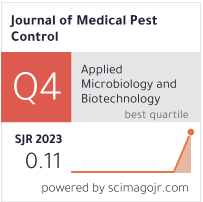Analysis of the Results of the Occupational Health Examinations of Railway Locomotive and Rolling Stock Drivers from the Region Under the Jurisdiction
Abstract
Background:
Railway locomotive and rolling stock drivers are exposed to various occupational hazards, including noise, vibration, stress, and irregular working hours, which may impact their health and work capacity. Regular occupational health examinations are essential to monitor their health status and ensure fitness for duty.
Objective:
To analyze the results of occupational health examinations among railway locomotive and rolling stock drivers from the region under jurisdiction, and to identify common health issues and risk factors.
Methods:
A retrospective analysis was conducted using data from occupational health examinations of [number] drivers performed between [years, if known]. Health indicators such as cardiovascular status, hearing, vision, musculoskeletal conditions, and mental health were assessed. The prevalence of health issues was analyzed in relation to age, years of service, and job category.
Results:
The most prevalent health conditions among drivers were [e.g., hypertension, hearing loss, obesity, musculoskeletal disorders], with a higher incidence in drivers with longer years of service (p < 0.05). A significant proportion of drivers required follow-up or medical intervention. Health outcomes were influenced by factors such as age, lifestyle, and duration of exposure to occupational hazards.
Conclusion:
Occupational health examinations reveal a considerable burden of work-related health issues among railway drivers. Targeted preventive measures, health education, and regular monitoring are recommended to improve the well-being and safety of this workforce.
Keywords:
occupational health, railway drivers, health examination, work-related diseases, prevention
Full text:
PDFReferences
Long L., Yu W., Hu C., Du L., Song X., Li L., Liu S., Bai X.



